My Love for Peace Dollars: A Numismatic Legacy
Introduction I’m Stephen Pfeil, President of Global Coin, I’ve been enchanted by the stories coins tell. Among them, the Peace Silver Dollar holds a special place in my heart. The idea for a peace-themed coin emerged as a way to...

Introduction
I’m Stephen Pfeil, President of Global Coin, I’ve been enchanted by the stories coins tell. Among them, the Peace Silver Dollar holds a special place in my heart. The idea for a peace-themed coin emerged as a way to commemorate the end of World War I and promote national unity. Minted from 1921 to 1935, this coin captures a nation’s yearning for harmony after the horrors of World War I. Its graceful design, rich history, and collectible allure make it a jewel in numismatics. At Global Coin, we delight in sharing these treasures with collectors who feel the same pull. Join me on a journey through the history, design, collectibility, investment potential, market trends, notable varieties, and practical tips for acquiring Peace Dollars, all infused with my personal connection to these enduring symbols of hope.
A Symbol Forged in Peace

My fascination with Peace Dollars began when I first held one, its cool silver surface whispering of a world healing from war. The coin’s origin traces to 1920, when the American Numismatic Association proposed a new silver dollar to commemorate the end of World War I. The Morgan Dollar’s brief 1921 revival delayed the project, but by December 1921, the Peace Dollar emerged, authorized to embody global tranquility. Designed by Anthony de Francisci, it was struck from 1921 to 1928 and 1934 to 1935, with over 190 million produced across Philadelphia, Denver, and San Francisco mints.
The Peace Dollar was born under the authority granted by the Pittman Act of 1918, which empowered the Secretary of the Treasury to oversee the melting of millions of Morgan Dollars and the acquisition and use of silver for new coins. The Act mandated that these melted coins be replaced with new silver dollars, and the Peace Dollar was introduced specifically to replace the Morgan Dollar in circulation. Notably, the Peace Dollar was issued without requiring explicit congressional approval, as it was considered a replacement coin under existing legislation. American silver mines fueled this effort, tying the coin to the nation’s rugged heart. Each Peace Dollar I hold evokes the 1920s—an era of optimism, jazz, and fragile hope. These coins aren’t just currency; they’re a testament to a world striving for peace after unimaginable loss.
History of the Peace Silver Dollars

The story of the Peace Silver Dollar is deeply intertwined with America’s journey through the early 20th century. After the devastation of World War I, there was a national desire to commemorate the hard-won peace and honor the sacrifices made. The United States Mint responded by launching a design competition, seeking a new silver dollar that would symbolize world peace. Anthony de Francisci, a talented sculptor, emerged as the winner, and his vision became reality with the first Peace Dollars struck in 1921.
The Peace Dollar’s obverse features a radiant Lady Liberty, embodying the nation’s ideals of freedom and hope, while the reverse displays a majestic eagle perched on a mountaintop, clutching an olive branch—a universal sign of peace. This powerful imagery, conceived in the aftermath of war, gave the coin a historical significance that resonates with collectors to this day. Minted from 1921 to 1928 and again from 1934 to 1935, the Peace Dollar became a symbol of America’s aspirations for a more harmonious world. With over 111 million coins produced, these silver dollars not only served as currency but also as enduring reminders of a pivotal era in American and world history. For collectors, each Peace Dollar is a tangible link to the nation’s quest for peace and the artistry of de Francisci’s timeless design.
A Design of Beauty and Aspiration

The Peace Dollar’s artistry never fails to captivate me. Anthony de Francisci, a young Italian-American sculptor, won a competition to design it, drawing inspiration from his wife, Teresa. The coin's design process involved careful artistic choices, with de Francisci incorporating powerful symbolism such as Liberty’s portrait to represent hope and renewal after World War I. The obverse portrays Liberty with a radiant crown, her hair flowing freely, and her expression serene yet resolute. “LIBERTY” arches above, while “IN GOD WE TRVST” below uses a Roman “V” for “U,” a classical flourish. The date grounds the design, marking each coin’s place in time.
The peace dollar design is especially significant, with the obverse symbolizing youthful optimism and the reverse embodying the nation’s desire for peace. The reverse is a masterpiece: an eagle, depicted at rest, stands atop a rock, clutching an olive branch, gazing toward a rising sun with rays piercing the horizon. During the design competition, several reverse designs were considered, but the final version was chosen for its strong message of peace and stability. “UNITED STATES OF AMERICA,” “E PLURIBUS UNUM,” and “ONE DOLLAR” encircle the scene, with “PEACE” proudly declared below. Mint marks (D, S, or none for Philadelphia) appear near the eagle’s tail. Weighing 412.5 grains of 90% silver and measuring 38.1 mm, the coin’s heft and intricate details embody de Francisci’s vision of a peaceful America. Every time I study one, I’m struck by its balance of strength and serenity.
Mint Mark Variations: Tracing the Journey
One of the most fascinating aspects of collecting Peace Dollars is exploring the different mint marks that trace the coin’s journey across the United States. The Peace Dollar was produced at three historic mints: the Philadelphia Mint, the Denver Mint, and the San Francisco Mint. Each mint left its own subtle signature on the coins it struck. On the reverse, just below the word “ONE,” you’ll find the mint mark—if there is one. Philadelphia-minted coins are unique in that they bear no mint mark, while Denver coins are marked with a bold “D,” and San Francisco coins with an “S.”
These mint marks are more than just letters—they tell the story of where each coin was born and add an extra layer of intrigue for collectors. Some mint mark variations are especially coveted, such as the elusive 1928-P Peace Dollar from the Philadelphia Mint, which is renowned for its rarity and high value. The presence or absence of a mint mark can dramatically affect a coin’s desirability and price, making the hunt for specific issues a rewarding challenge. Tracing these mint marks not only deepens your appreciation for the Peace Dollar series but also offers a window into the rich history of the United States Mint and its storied facilities in Philadelphia, Denver, and San Francisco.
The Thrill of Collecting Peace Dollars

As a collector, I find Peace Dollars endlessly rewarding. Their 10-year mintage run makes assembling a complete set achievable yet exciting, with enough challenges to keep me hooked. There’s a special satisfaction in completing a Peace Dollar collection, which mirrors the sense of completing the U.S. coinage redesign that began in 1907. Common dates in circulated condition are affordable, often trading near their silver content (about 0.7734 ounces). But the pursuit of key dates, high grades, and varieties ignites my passion. The 1928 Philadelphia, with a mere 360,649 minted, is the series’ holy grail—uncirculated examples can fetch thousands. Other scarce dates, like the 1921 High Relief or 1934-S, fuel the chase.
The 1921 High Relief coins, struck with deeper dies for a sculptural effect, are particularly prized. Notably, 1921 was the first year of Peace Dollar production, making these coins especially significant to collectors. Their bold details stunned collectors but stressed mint equipment, leading to standard relief from 1922 onward. I’ve spent countless hours hunting these at coin shows, their artistry unmatched. Varieties like the 1922-D “No D” die pair, where a worn die erased the mint mark, or doubled die obverses, add intrigue. Each Peace Dollar I add to my collection feels like capturing a piece of the Roaring Twenties.
Modern Peace Dollars: A New Chapter
A century after the first Peace Dollars were struck, the United States Mint ushered in a new era with the release of modern Peace Dollars in 2021. These coins celebrate the 100th anniversary of the original series, bringing the iconic design of Anthony de Francisci into the 21st century. Struck in .999 fine silver, the modern Peace Dollars offer collectors a stunning blend of classic artistry and contemporary minting technology.
The new series includes both uncirculated and proof finishes, with coins produced at the Philadelphia and San Francisco Mints—each bearing their respective mint marks. Collectors have been quick to embrace these modern Peace Dollars, drawn by their exceptional quality, historical continuity, and the United States Mint’s attention to detail. For those who cherish the legacy of the original Peace Dollar, these new coins represent a fresh opportunity to own a piece of numismatic history, while also enjoying the advancements in silver coin production. The modern Peace Dollars have quickly become must-have additions for both seasoned collectors and newcomers eager to be part of this ongoing legacy.
Investment Potential: Silver and Scarcity
As an investor, I see Peace Dollars as a dual opportunity: silver’s intrinsic value and numismatic rarity. Their 90% silver content ties them to bullion prices, which, in 2025, remain robust amid industrial demand and economic uncertainty. Each Peace Dollar contains approximately 0.77344 troy ounces of pure silver, so if you're wondering how much silver is in a Peace Dollar, that's the precise amount based on its weight and purity. A circulated common-date Peace Dollar might sell for $40–$60, but rare dates and high-grade coins soar. An MS-65 1928 Philadelphia or 1921 High Relief can command thousands, with top-grade examples reaching five figures.
Condition drives value. Uncirculated coins graded MS-64 or higher by PCGS or NGC appreciate as collectors vie for quality. Low-mintage issues like the 1927-D or 1934-S are strong performers. I’ve watched clients build sets that grow steadily, blending silver’s stability with numismatic upside. However, counterfeits target key dates, so I urge buyers to choose reputable dealers like Global Coin, where every coin’s authenticity is assured. A certified Peace Dollar is both a hedge and a legacy.
Market Trends in 2025

The Peace Dollar market is vibrant today. Rising silver prices and collector enthusiasm drive demand, particularly for key dates and high-grade coins. The U.S. Mint’s 2021 reissue of 99.9% silver Peace Dollars, marking the centennial, sparked renewed interest, though I’m partial to the original 90% silver coins for their historical weight. Recent auctions reflect strength—an MS-66 1928 Philadelphia sold for over $25,000 in 2024. Common dates remain accessible, starting at $40–$100, but pristine rarities grow scarcer as collectors hold tight.
Coin shows and online platforms buzz with activity. Younger collectors, drawn by the coin’s beauty and story, are diving in, guided by resources like The Official Red Book and PCGS CoinFacts. At Global Coin, our curated inventory reflects this demand, offering a range of silver peace dollar issues from affordable starters to investment-grade treasures. Some popular silver peace dollar dates are currently out of stock due to high demand, so check our stock status for availability and pricing. The market’s energy mirrors the optimism of the 1920s, making now an exciting time to collect.
Notable Varieties: The Collector’s Quest
Chasing Peace Dollar varieties is my favorite numismatic adventure. The 1921 High Relief, with its deep, three-dimensional strike, is a standout—its limited run makes it a prize. The 1922-D “No D” die pair, where the mint mark vanished due to die wear, is a rare error, with high-grade examples fetching thousands. Doubled die varieties, like the 1922 Philadelphia VAM-2A, show subtle doubling on Liberty’s profile, rewarding keen eyes. The 1934-D “Doubled Die” offers another thrill, with visible doubling on the date and motto. Many collectors pursue both Morgan and Peace Dollar varieties, appreciating the historical connection and shared significance of these two iconic series in American numismatics.
I once spotted a 1922 “No D” in a dealer’s case, its anomaly thrilling me as I verified it with a loupe. These varieties, cataloged in VAM (Van Allen-Mallis) guides, turn collecting into a treasure hunt. I encourage collectors to study VAM listings and use a 10x magnifier. Finding a rare variety feels like striking silver in a Comstock mine.
Comparison to Other Coins: Standing Among Giants
The Peace Dollar holds a distinguished place among America’s most celebrated silver coins, often compared to the legendary Morgan Dollar and the Eisenhower Dollar. The Morgan Dollar, minted from 1878 to 1904 and briefly in 1921, is revered for its intricate design and deep historical roots, making it a cornerstone of many collections. The Eisenhower Dollar, produced from 1971 to 1978, marked a new chapter in American coinage with its bold, modern look and tribute to President Dwight D. Eisenhower.
What sets the Peace Dollar apart is its unique blend of beauty, historical significance, and symbolism. Struck in .900 fine silver, each Peace Dollar weighs 26.73 grams, with a net weight of approximately 0.77344 troy ounces of pure silver—making it a substantial and valuable piece for both collectors and investors. The Peace Dollar’s design, with its serene Liberty and powerful eagle, captures the spirit of a nation yearning for peace after World War I, while its limited mintage adds to its allure. Whether compared to the Morgan Dollar’s classic elegance or the Eisenhower Dollar’s modern appeal, the Peace Dollar stands tall as a true icon of American numismatics, cherished for its artistry, silver content, and enduring message of hope.
Practical Tips for Acquiring Peace Dollars

My years at Global Coin have taught me how to build a Peace Dollar collection wisely. The Peace Dollar marked a significant shift from paper money to silver coins, offering collectors a tangible alternative to paper currency and symbolizing a new era in American numismatics:
-
Start Smart: Begin with common dates like 1922, 1923, or 1925 in circulated or low-grade uncirculated condition. They’re affordable and let you learn the series. There’s excitement in acquiring a new coin, whether it’s a vintage or modern Peace Dollar.
-
Prioritize Quality: For investment, seek PCGS or NGC-graded coins in MS-63 or higher. These balance cost and appreciation potential.
-
Target Key Dates: If your budget allows, aim for the 1928, 1921 High Relief, or 1934-S. Even lower-grade examples hold strong value.
-
Beware Counterfeits: Key dates are faked. Buy from trusted dealers like Global Coin, and have raw coins authenticated by professionals.
-
Explore Varieties: Use VAM guides to hunt errors like the 1922 “No D.” A good loupe and lighting are essential.
-
Store Safely: Keep coins in archival holders, away from humidity, to preserve condition.
-
Join the Community: Attend coin shows, join the ANA, and engage online. Numismatists share knowledge generously.
-
Watch for Modern Releases: When the U.S. Mint issues modern Peace Dollars, pay attention to the initial release dates—such as the 2023 Uncirculated and Proof editions—and plan your purchase accordingly. Be aware of the household order limit set by the Mint during these releases to ensure fair access and avoid missing out.
A Personal Connection to Hope
Peace Dollars resonate deeply with me. Growing up, I heard stories of my great-uncle, a doughboy in World War I, who returned home carrying a 1922 Peace Dollar as a talisman of survival. He called it his “lucky peace.” That coin, now in my collection, sparked my love for numismatics. Holding a 1921 High Relief, I picture de Francisci sketching Liberty, dreaming of a world without war. At Global Coin, I’ve helped collectors find their own connections—whether it’s a 1928 to crown a set or a worn 1923 tied to family lore.
These coins evoke the 1920s’ spirit—flappers, speakeasies, and a nation rebuilding. My collection, built over decades, is a tribute to that era’s hope. Each Peace Dollar, from Denver’s rugged strike to Philadelphia’s polished shine, feels like a promise kept.
Conclusion: A Timeless Symbol
The Peace Silver Dollar is more than a coin—it’s a beacon of resilience and aspiration. As President of Global Coin, I’m honored to share my passion with collectors worldwide. Whether you’re starting with one coin or chasing a complete set, Peace Dollars offer beauty, history, and value. With silver prices strong and collector interest soaring, there’s no better time to begin or expand your journey. Their 90% silver gleam, tied to an era of hope, captivates both heart and mind.
Visit shopglobalcoin.com to explore our curated Peace Dollar selection. Let’s embark on this numismatic adventure together, uncovering the stories within each coin. What’s your Peace Dollar story? I’d love to hear it.
Related Articles
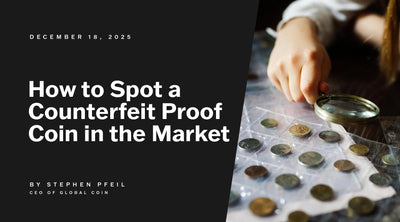
How to Spot a Counterfeit Proof Coin in the Market
How to Spot a Counterfeit Proof Coin in the Market In the world of numismatics, few things hold ...
Discover More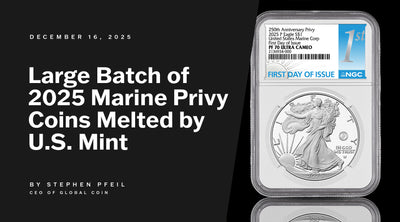
BREAKING NUMISMATIC NEWS: Large batch of 2025 Marine Privy Coins MELTED by U.S. Mint
BREAKING NUMISMATIC NEWS: Large batch of 2025 Marine Privy Coins MELTED by U.S. Mint A historic ...
Discover More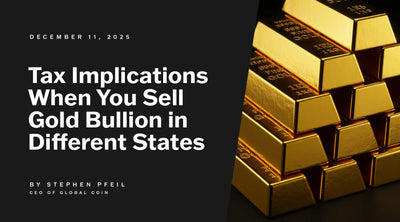
Tax Implications When You Sell Gold Bullion in Different States
Disclaimer: The following content is for informational purposes only and should not be construed ...
Discover More

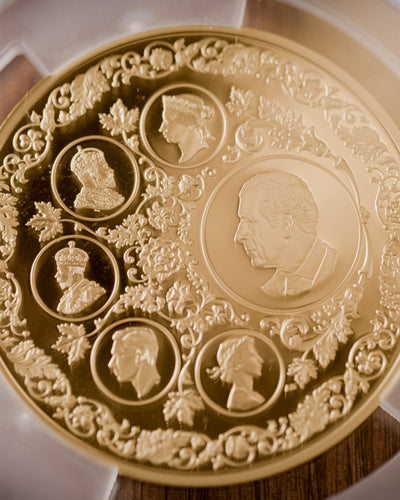
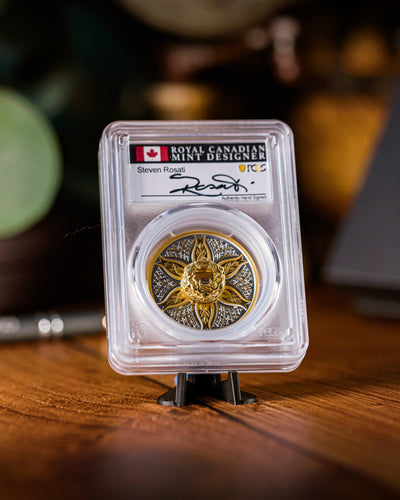
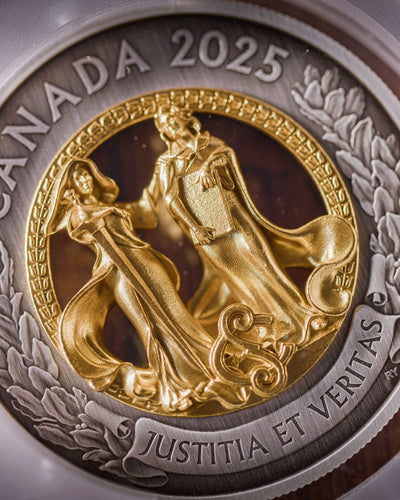
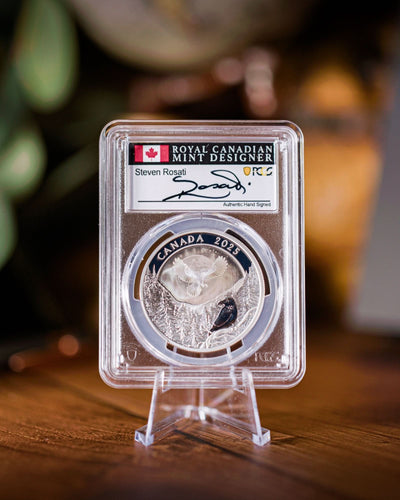
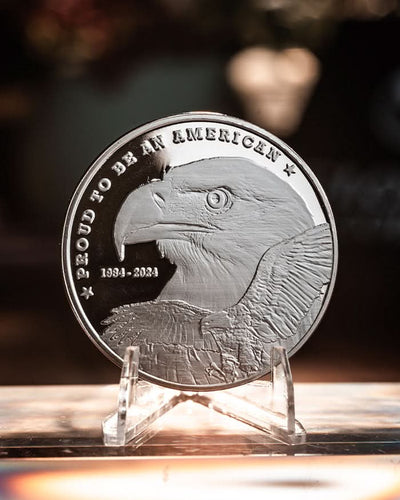
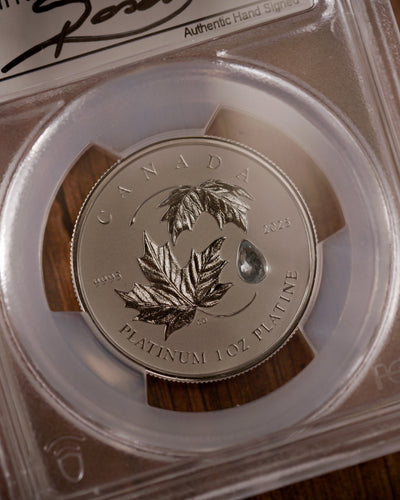
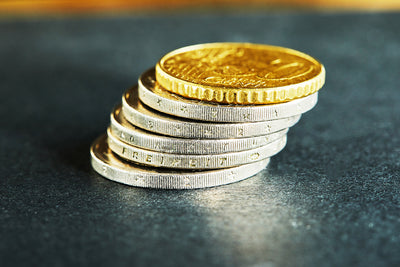
Leave a comment
This site is protected by hCaptcha and the hCaptcha Privacy Policy and Terms of Service apply.